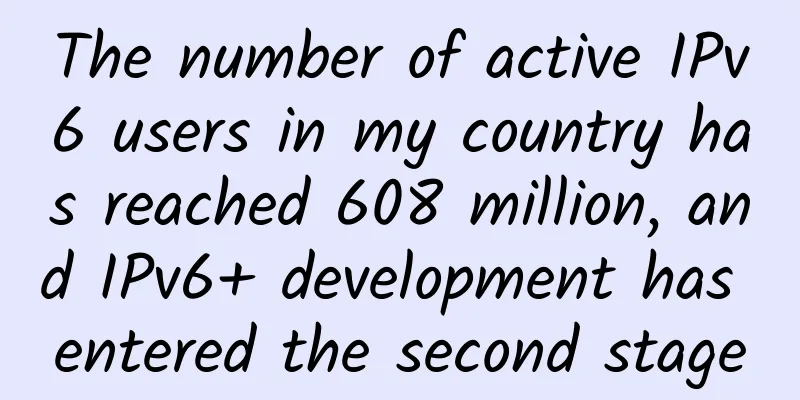Why does WiFi 7 depend on the 6GHz band?

|
Over the past 20 years, as the most commonly used Internet access technology, WiFi has relied on only two frequency bands, 2.4GHz and 5GHz (a total of more than 600 MHz spectrum), to carry the ever-growing network demand. With the rapid growth of the scale of WiFi network access devices and the number of terminals, the spectrum has become the bottleneck of WiFi network capacity. The traditional 2.4GHz and 5GHz frequency bands are already overcrowded. This is reflected in the user experience, that is, the increase in network latency, the decrease in user speed, and the increasing frequency of interference between WiFi routers. With the rapid development of the WiFi industry, the demand for radio spectrum resources is very urgent. WiFi 7 is the next generation WiFi standard. In addition to supporting the traditional 2.4GHz and 5GHz frequency bands, it will also support the 6GHz frequency band, and the three frequency bands can work simultaneously. WiFi 7 is expected to support up to 30Gbps throughput, which is about three times that of WiFi 6. The biggest performance improvement is inseparable from the support of the 6GHz band, after all, the 6GHz band has a total bandwidth of 1200MHz. Hu Peng, product marketing director of Qualcomm Technologies, told reporters that the current maximum available bandwidth in the 6GHz band is 1.2GHz worldwide, which is a significant improvement over the current 300-400 MHz bandwidth of the 5GHz band or the 80MHz bandwidth of the 2.4GHz band. "If you have 320MHz bandwidth support, the throughput can also be increased. In fact, throughput is one aspect, but the most important thing is that the 6GHz band network is relatively clean, and without interference from other traditional WiFi devices, communication efficiency will also be improved." Why does WiFi need 6GHz?In the past, WiFi devices mainly used 20MHz and 40MHz bandwidths. Our mobile devices are usually equipped with two WiFi antennas to support MIMO. According to the data rate calculation table provided by Aruba Networks, the theoretical maximum rate of a WiFi device using 2-way MIMO and 64QAM modulation at a bandwidth of 40MHz can only reach about 344Mbps. By increasing the bandwidth to 80MHz, the maximum rate can exceed 700Mbps, and the 160MHz bandwidth of WiFi 6 can fully meet the needs of gigabit fiber. WiFi bandwidth supports automatic adaptation of 20MHz, 40MHz, 80MHz, and up to 160MHz. With WiFi 7, it has increased the bandwidth by 320MHz, and currently only operates in the 6GHz band. For faster connections, WiFi 7 adds new bandwidth modes from the original 160MHz in WiFi 6, including continuous 240MHz, non-continuous 160+80MHz, continuous 320MHz and non-continuous 160+160MHz. Compared to 2.4GHz, 5GHz and other frequency bands, 6GHz operates on a higher frequency band and provides greater bandwidth, which translates into faster speeds and more capacity, making it suitable for high-bandwidth and low-latency activities such as streaming and gaming. For WiFi, the 6GHz spectrum can bring a qualitative leap in performance because 6GHz doubles the number of WiFi channels. Channel is also called channel or frequency band. It is a data signal transmission channel that uses wireless signals (electromagnetic waves) as the transmission carrier. Wireless networks can operate on multiple channels. Various wireless network devices within the coverage area of the wireless signal should use different channels as much as possible to avoid interference between signals. Taking the most commonly used 40MHz channel as an example, 5GHz can provide 4 normal channels and 8 DFS channels. (Note: The function of DFS channel is to protect the frequency used by radar from interference. When the WiFi device detects that there is a radar using this frequency band, the WiFi will automatically avoid this channel.) On 6GHz, there are up to 29 40MHz channels that are not restricted by DFS for WiFi devices to choose from. Global Status of 6GHz Spectrum AllocationAt the 3GPP RAN#96 plenary meeting of the International Mobile Communications Standardization Organization held in Budapest, Hungary from June 6 to June 9, 2022, 3GPP officially defined the U6G (upper half of 6GHz, i.e. 6425-7125MHz) licensed spectrum, with the frequency band number n104, and clarified the corresponding network/terminal RF standards, providing a standard basis for the subsequent industry chain to develop 6GHz products. The conference also passed the Rel-18 project for the full 6GHz spectrum (5925MHz-7125MHz), which is a key milestone for the IMT of the 6GHz spectrum. In fact, the biggest performance improvement brought by WiFi 7 still relies on the 320MHz channel under 6GHz. According to the spectrum allocation of different countries, WiFi 7 can support multiple 320MHz continuous channels. However, some regions still have different decisions on the allocation of 6GHz to WiFi, which directly determines the fate of WiFi 7. There are two main directions for the allocation of 6GHz WiFi spectrum internationally. The first is a one-step approach based on ITU Region 2 (Americas), which opens the entire 1.2GHz spectrum (5925-7125MHz) to WiFi use. The second method is a gradual approach, first opening up 500MHz in the low 6GHz band (5925-6425MHz) for WiFi use, while continuing to take a wait-and-see attitude on the planning of the high 6GHz (6425-7125MHz). Currently, only the United States and South Korea can officially certify WiFi's 6GHz spectrum. China is expected to use 6GHz for the next-generation mobile communication 6G network and will also reserve some resources for WiFi 6GHz. The specific plan is not yet clear. ConclusionModern high-speed WiFi devices have increasingly higher requirements for WiFi transmission performance. Currently, emerging industry applications cannot demonstrate their best service quality in the congested 2.4GHz and 5GHz frequency bands. WiFi 7 will support high-band multi-link mode, which requires the use of the 6GHz carrier frequency band. The key to determining the fate of WiFi 7 is the promulgation of 6GHz spectrum policies. If 6GHz is fully allocated to 5G or 6G mobile communication networks, it will affect the improvement of WiFi 7's spectrum resources. |
<<: A practical guide to running databases across regions and Kubernetes clusters
>>: 5G makes online and offline retail interesting again
Recommend
RackNerd: AMD Ryzen packages are available, starting at $18.88 per year for 1GB memory packages, San Jose/New York data centers
RackNerd has launched various AMD Ryzen series da...
Acceleration Cloud: Deyang High-Defense Cloud Server 39 yuan/month-dual core/2G memory/60G hard disk/5M bandwidth/100G defense
Acceleration Cloud is a website under Chengdu Xia...
PacificRack: Unlimited KVM in Los Angeles starting at $1.50 a month or $15 a year
PacificRack has launched new products. The word &...
In the era of 5G, it is not only about internet speed and mobile phones, but you have also overlooked these
[[393747]] When it comes to 5G, is your first rea...
DediPath Independence Day Promotion: 40% off all VPS hosts, New York dedicated servers starting from $35/month
DediPath launched a US Independence Day promotion...
HostNamaste: $36/year-2GB/50GB/2TB/Los Angeles & Dallas & France & Canada
HostNamaste recently provided several special ann...
Experts interpret Huawei's "recipe" for smart cities: taking a rational, scientific and pragmatic approach
[51CTO.com original article] Not long ago, the 21...
What Software-Defined LAN Means for Campus Virtualization
Software-defined LAN, or SD-LAN, is the applicati...
F5 Expands SaaS-Based Security Portfolio with New Distributed Cloud Application Infrastructure Protection
F5 (NASDAQ: FFIV) recently announced the launch o...
Next-generation network management is difficult without AIOps
AI for operations, or AIOps platforms, is the in...
The 17th China Enterprise Annual Selection List for 2022 was announced: Juniper Networks China CTO Jing Youhao won the 2022 IT Industry Network Outstanding Contributor
In November 2022, the "China Enterprise &quo...
Illustrated explanation of the past and present of four IO models
Recently, I have come to believe that when explai...
IBM releases 'quantum-safe' tool with end-to-end encryption to protect against quantum computing attacks
On May 15 , IBM launched a set of tools called &q...
Have you used "Online Documents"? It allows multiple people to work together and synchronize content in real time. It's so efficient!
Have you ever encountered a situation at work whe...
Friendhosting New Year Flash Sale: 50% off all VPS, unlimited traffic for 10 data centers starting at $16/year
Friendhosting, a long-established business founde...









